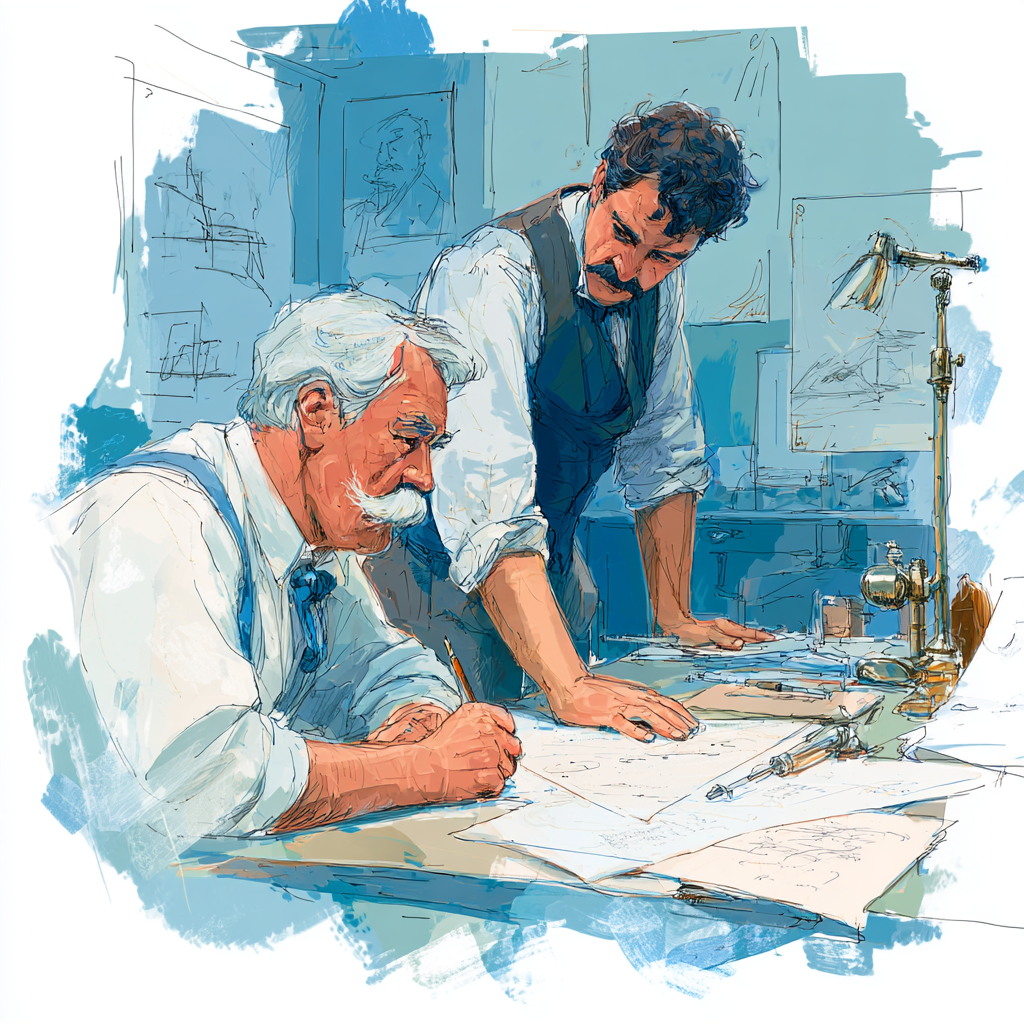From Sketch to Prototype: The Tools Every Inventor Should Use

Every invention begins as a sketch—sometimes on the back of a napkin, sometimes in the margins of a notebook during a late-night “aha” moment. But if you want your idea to make it into the real world—or better yet, onto store shelves—you need to turn that sketch into a prototype.
As a patent agent, I always tell inventors: a prototype doesn’t just show what your invention is—it proves it works. It’s the bridge between imagination and implementation, and it can make all the difference when filing a strong patent application, pitching investors, or approaching licensees.
The good news? You don’t need to be a mechanical engineer or have a six-figure product development budget. Thanks to today’s affordable tech, inventors have access to powerful tools that can turn ideas into functional models quickly and professionally.
This guide covers the essential tools every inventor should know:
- CAD software
- 3D printing
- Prototyping kits
- Virtual modeling tools
Let’s dive in.
Step 1: Start with CAD – Computer-Aided Design
Before you can build something physical, you need a digital blueprint. That’s what CAD software is for. It allows you to create precise 2D or 3D models of your invention—how it will look, how it will move, and how its parts interact.
Why CAD Matters
- It allows you to visualize and refine your design
- You can share it with engineers or manufacturers
- It provides drawings that can be submitted in patent applications
- It allows for simulation—checking tolerances, stress points, and mechanics
“A good CAD model is the modern-day equivalent of a master craftsman’s blueprint,” I often tell inventors. “It’s the first real proof that your idea has substance.”
Top CAD Tools for Inventors
- Fusion 360 (Autodesk) – Industry-standard for 3D design, simulation, and collaboration. Free for hobbyists and startups under certain thresholds.
- TinkerCAD – Beginner-friendly, browser-based CAD tool. Great for kids and quick concepting.
- SolidWorks – Professional-grade software used in industrial design and engineering.
- FreeCAD – Open-source 3D modeling software for those on a budget.

Step 2: Use 3D Printing to Bring Your Idea to Life
Once you’ve got a 3D model, it’s time to make it real. Enter the world of 3D printing—a game-changer for inventors. You can now create tangible models of your designs in your garage, home office, or local library.
Why 3D Printing is Invaluable
- You can test form, fit, and function without waiting on manufacturers
- You can iterate quickly—often in a matter of hours
- It’s cost-effective for early-stage models (as little as $1–$5 in material per part)
- It helps you spot flaws or ergonomic issues early
Types of 3D Printing
- FDM (Fused Deposition Modeling): Most common for home use. Prints layers of thermoplastic. Best for simple, sturdy parts.
- SLA (Stereolithography): Uses resin and lasers. Higher detail, smoother finish. Great for cosmetic models.
- SLS (Selective Laser Sintering): For more advanced uses—prints in nylon or powdered metals. Used in industrial settings.
Recommended 3D Printers
- Prusa i3 MK4 – Excellent balance of precision, ease-of-use, and community support.
- Creality Ender 3 V2 – A budget-friendly FDM printer with a large user base.
- Formlabs Form 3 – Professional resin printer for highly detailed SLA prints.
Step 3: Experiment with Prototyping Kits
Not all inventions are 3D-printed. If you’re building something mechanical, electrical, or interactive, you’ll likely need hands-on components to explore how it works in the real world.
What Are Prototyping Kits?
These are sets of tools, parts, and modules that let you assemble working versions of your invention—especially if it includes electronics, sensors, or moving parts.
They’re especially useful for:
- Smart devices
- Robotics
- IoT products
- Medical devices
- Mechanical linkages
Top Prototyping Tools & Kits
- Arduino Starter Kit – Great for learning to build circuits, control motors, and add sensors.
- Raspberry Pi – A credit-card-sized computer used in more advanced prototypes (e.g., with screens or cameras).
- Makeblock Kits – Modular robotics and maker tools for STEM inventors.
- Breadboards and jumper wires – Essential for testing electronics without soldering.
“If you’re inventing something that plugs in, lights up, or moves, prototyping kits let you build and break safely—without blowing a fuse or your budget.”
Even physical-only inventions (think kitchen tools or hardware devices) can benefit from modular kits like:
- LEGO Technic sets (for building hinge systems or gears)
- Sugru or Instamorph (moldable materials to mock up soft-touch parts)
Step 4: Use Virtual Modeling and Simulation Tools
Once you’ve got a CAD model and a physical prototype, the next level is virtual testing. This helps you analyze stress points, material needs, and real-world performance before investing in tooling or manufacturing.
What Can You Simulate?
- Mechanical stress
- Weight distribution
- Thermal dynamics
- Movement and kinematics
- Fluid dynamics (for pumps, valves, airflow)
Best Virtual Modeling Tools
- Fusion 360 (Simulation Workspace) – Offers stress tests, motion studies, and heat analysis built into its interface.
- COMSOL Multiphysics – Used for complex simulations in physics-heavy applications.
- ANSYS Discovery – Great for engineers needing thermal, fluid, or structural analysis.
- Onshape – Cloud-based CAD with version control and real-time collaboration.
These tools help you identify failure points, reduce material waste, and ensure your invention performs as intended under real conditions—all before you spend a dime on mass production.

Step 5: Document Everything for Patent & Product Development
As a patent agent, I’ll tell you this plainly: every iteration, drawing, test result, and design file matters.
Good documentation helps you:
- Prove conception and reduction to practice (important for patent disputes)
- Draft better patent claims
- Show development history to investors or partners
- Work more effectively with engineers and manufacturers
Keep records of:
- Date-stamped sketches
- CAD files and version history
- 3D print settings and results
- Photos or videos of tests
- Notes from focus groups or early users
Use a cloud storage system like Google Drive or Dropbox with clear folder naming conventions. You never know when a good notebook or screenshot will save your invention—or your case.
Bonus: Use Online Platforms to Share & Collaborate
Once you’ve built your prototype, it’s time to get feedback and iterate. That’s where online inventor platforms can help.
Useful Platforms:
- GrabCAD – Share your CAD files with engineers and designers
- Hackaday.io – Build a public project page to get feedback and contributors
- Thingiverse – For publishing and remixing 3D models (good for non-commercial invention sharing)
- Upwork / Fiverr – Hire CAD experts or prototyping consultants if you’re stuck
Sometimes a second set of eyes can see flaws—or opportunities—you didn’t.
Final Thoughts from a Patent Agent
If you’re serious about your invention, don’t stop at the sketch.
Today’s tools make it possible for solo inventors, students, or garage tinkerers to build high-quality prototypes without a full lab or engineering team. And in my experience, inventors who prototype early not only get better patents—they build better products.
“Your prototype is your first proof of seriousness. Investors trust it. Manufacturers understand it. Patent examiners respect it.”
So sketch it, model it, print it, and test it. You’re not just imagining the future—you’re building it.
Need help protecting your invention or building a filing strategy around your prototype? I’m a registered U.S. Patent Agent and can help you translate your work into strong, defensible intellectual property. Let’s make sure your invention stays yours.